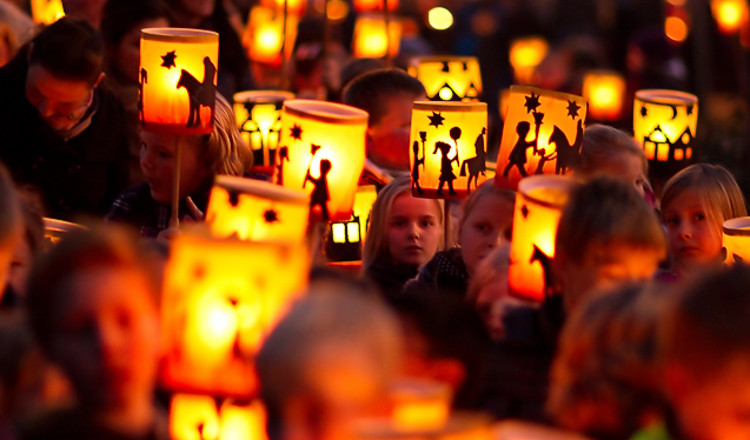
Basil, a close friend of mine sent me a message on the significance of November 11. The message struck me as how well the Left have managed to destroy religion.
Understand that today is not the first attempt to destroy the church. Basil related to me the story of the traditional teaching of the church regarding the government’s role in society. And that’s why November 11 has significance. The story underscores the ongoing battle between the government and the church, and it centers around charity.
Martinmas (Mass of St. Martin) is today called the Feast of St. Martin of Tours. It is celebrated on November 11, though I doubt most Americans or even Catholics bothered to do so. St. Martin was a Roman soldier who came upon a naked, poor, beggar. In seeing the man’s plight, Martin gave the man half his cloak.
Some people questioned this act, saying “But he is a saint, why did he only give the beggar half of his cloak, and not the entire cloak?” The answer: he could only give what was his.
The law of the time was that the soldier paid for half of his uniform. The other half was supplied by the Roman army, ergo the government. Therefore, Martin could only offer that which was his. Nemo dat, non quod habet, Latin for “One cannot give what one does not have”.
The church never espoused or endorsed government as a welfare agency. The church performed this duty to mankind, leaving government to serve its purpose. Thus, the Church was always exempt from taxes. Further, clergy were judged not by secular law, but by Ecclesiastical law.
A power struggle ensued between St. Thomas á Becket and King Henry.
A series of conflicts with the King developed, including that over the jurisdiction of secular courts over English clergymen. Attempts by Henry to influence the other bishops against Becket began in Westminster in October 1163, where the King sought approval of the traditional rights of the royal government in regard to the church. This led to the Constitutions of Clarendon, where Becket was officially asked to agree to the King’s rights or face political repercussions.
Henry is said to have uttered words that were interpreted by his men as wishing Becket killed. The king’s exact words are in doubt and several versions have been reported. The most commonly quoted, as handed down by oral tradition is
“Will no one rid me of this turbulent priest?”.
However, according to historian Simon Schama this is not the correct translation of the king’s words. Schama accepts the account of the contemporary biographer Edward Grim, translated from Latin:
“What miserable drones and traitors have I nourished and brought up in my household, who let their lord be treated with such shameful contempt by a low-born cleric?”
Becket pays the ultimate price
On 29 December 1170, four knights arrived at Canterbury. According to accounts left by the monk Gervase of Canterbury and eyewitness Edward Grim, the knights placed their weapons under a tree outside the cathedral and hid their armor under cloaks before entering to challenge Becket. The knights informed Becket he was to go to Winchester to give an account of his actions, but Becket refused.
The knights left to retrieve their weapons, while Becket returned inside the main hall for vespers. When the knights rushed the hall, causing monks to bolt Becket and themselves behind doors in a panic, Becket reportedly said to the monks:
“It is not right to make a fortress out of the house of prayer!”
He then ordered them to open the doors. And he continued walking to the monastic cloister, the stairs into the crypt, and the stairs leading up into the quire of the cathedral where the monks were chanting vespers.
The four knights entered the room with drawn swords wielding drawn swords, ran into the room demanding of the remaining monks, “Where is Thomas Becket, traitor to the King and country?!”.
The knights eventually found Becket.
Becket sees them, and declares, “I am no traitor and I am ready to die.”
One knight grabbed him and tried to pull him outside, but Becket grabbed onto a pillar and bowed his head to make peace with God. Moments later, he was killed. But Becket’s story doesn’t end with his death.
Soon after the assassination of Becket, the faithful throughout Europe began venerating Becket as a martyr. Then on 21 February 1173—little more than two years after his death—he was canonized by Pope Alexander III in St Peter’s Church in Segni.
How many of us have the courage of Becket’s conviction? Moreover, how many of us practice the charity of St. Martin?



